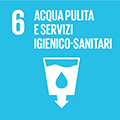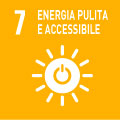- Docente: Paolo Garofalo
- Crediti formativi: 8
- SSD: GEO/05
- Lingua di insegnamento: Inglese
- Modalità didattica: Lezioni in presenza (totalmente o parzialmente)
- Campus: Bologna
- Corso: Laurea Magistrale in Geologia e territorio (cod. 9073)
Conoscenze e abilità da conseguire
This course aims at providing an integrated and quantitative understanding of the geochemical processes leading to the genesis of mineral deposits, their environmental impact, and the analytical questions linking them. The first module will focus on analysis of rocks and minerals. The second module will focus on analysis of fluids and gases.
Contenuti
The objective of this course is giving the students an introduction to the geochemical processes, techniques, and methods that are necessary to quantify and model the genesis of primary mineral deposits (typical ore bodies), recover secondary raw materials, quantify rock-fluid-gas interactions in geological environments, and also evaluate environmental risks and rehabilitation good practices associated to RM exploitation. The course contents will include electrolyte theory; concept and use of equilibrium constants in geochemistry; chemical potential diagrams; metal partitioning, solubility, and transport in natural aqueous solutions; solubility of ore and gangue minerals; saturation index and its applications; mineral stability diagrams; Eh-pH diagrams; stable isotope systematics; environmental impact and consequent rehabilitation of natural and man-made pollution.
At the end of the course the students will gain the fundamental geochemical tools to RM exploration, and evaluation of environmental impact. A number of seminars from industry and institutional partners will provide hands-on knowledge and case studies of applications of geochemical tools.Testi/Bibliografia
Anderson G. (2017). Thermodynamics of Natural Systems. Cambridge University Press, 3rd Edition
Barnes H.L. (1997). Geochemistry of Hydrothermal Ore Deposits: Wiley & Sons, Inc.. 3rd Edition
Treatise in Geochemistry (2003). Environmental Geochemistry. Vol. 9. p. 1-203. Elsevier
Papers and additional reading material will be distributed as wellMetodi didattici
Class teaching;
Laboratory excercises;Seminars
Modalità di verifica e valutazione dell'apprendimento
1. Level of independence and effectiveness during classroom exercises – 25%
2. Written test – 50%
3. Oral test – 25%
Strumenti a supporto della didattica
Laboratory excercises;
Seminars provided by external instructors from academia and industry
Orario di ricevimento
Consulta il sito web di Paolo Garofalo
SDGs




L'insegnamento contribuisce al perseguimento degli Obiettivi di Sviluppo Sostenibile dell'Agenda 2030 dell'ONU.
